The emergency ‘stopping’ on May 8 of all 1,222 carriages in Hitachi’s entire UK fleet of 182 trains in the ‘800/801/802’ series immediately paralysed all passenger services across four operators - including all long-distance LNER ‘Azuma’ and Great Western Main Line services.
On that Saturday morning, none of LNER’s 65 Hitachi ‘Azuma’ trains ran between King’s Cross, Leeds, York, Newcastle, Edinburgh, Inverness and Aberdeen, nor any of GWR’s fleet of 93 trains between Paddington, Bristol, Cardiff, Swansea, Exeter and Penzance. All 19 TransPennine Express ‘802/2’ trains, together with Hull Trains’ fleet of five trains, were also stopped after an overnight examination at Hitachi’s Stoke Gifford depot (near Bristol) revealed serious cracking around the lifting pocket, where depot jacks are inserted to lift trains during wheel and bogie inspections and exchanges. This second - and actually much more serious problem - was discovered during exams in connection with known cracking problems around Class 800 underframe yaw damper brackets, which help stabilise bogies at high speed. The full story is on pages 8-9.
This is a serious problem which will take quite some time to properly diagnose and correct, and while Hitachi has some serious questions to answer, it is nevertheless important that we keep a sense of perspective. Such problems are not new. Going back to steam days, it was not unknown for entire classes of locomotive to be withdrawn when severe metal fatigue reared its head.
Likewise, yaw damper issues on modern trains are not uncommon (the new CAF Class 195 and ‘331’ fleets have been having problems, RAIL 929) and this can be safely managed while cause and mitigation are investigated and implemented. But the lifting pocket cracks are potentially a much more serious problem leading to the unprecedented withdrawal of more than a thousand vehicles.
On Tuesday May 11, Hitachi engineers, designers and ORR Director of Rail Safety Ian Prosser CBE held an emergency summit at Hitachi’s North Pole depot, together with all affected operators and other stakeholders. The immediate objective was to ascertain whether it was possible for the cracked lifting pockets to actually fall off at speed, with the consequent risk of serious injury, infrastructure damage, or even derailment caused by a flying piece of aluminium alloy shrapnel. The second priority was to produce an inspection and mitigation plan to allow the affected trains to safely return to service, pending repairs to the ‘stress corrosion cracking’ around the lifting points.
On LNER, there were no examples of yaw damper bracket cracking on any of its 65 trains, but widespread cracking of the lifting point pockets was found. These are aluminium components which are welded additions to the all-aluminium body built using Hitachi’s ‘friction stir’ welding of long components, resulting in strong, light bodies. Various components then need to be welded to that body (including the lifting point pockets) so there will inevitably be a sharp focus on these components. Welding aluminium is not a trivial process - the conditions demanded to achieve safety and success are extremely onerous. Welding aluminium can damage the crystalline structure of the metal, compromising its strength, so the issues are highly significant.
As RAIL closed for press, it emerged that the GWR Class 802s that largely run on the curvy, undulating main line west of Exeter are disproportionately affected by lifting point cracking, compared with the units which run on the longer, straighter, faster main lines through Bristol to South Wales and Cardiff.
LNER also reports lifting point cracking across its entire fleet, on all types of vehicles, including all of its nine-car bi-mode trains. Built in Japan, these are some of the oldest in the fleet (dating from 2014), with the highest mileages. They also run frequently over the undulating and twisty Scottish routes to Inverness and Aberdeen. Investigators will therefore be looking closely at the route characteristics and what impact these have on this cracking. Ten of the Hitachi Class 385 EMUs have also been found to be affected.
GWR has only ever had two ‘800s’ with significant yaw damper bracket cracking, which really sets the severity of the lifting bracket problem in sharper focus, given that on Wednesday May 12 the company had just two of its 93 Hitachi trains available for service. A further irony was that one of these hit a deer on the evening of May 11 and was therefore out of service for minor repairs on May 12. That GWR managed to run 87% of its total services is explained by normal availability of its extensive fleet of suburban and regional Thames Valley fleets of Class 387 EMUs and Class 165/166 ‘Turbo’ trains.
Both LNER and GWR MDs David Horne and Mark Hopwood acknowledged the vigorous global response by Hitachi to investigate and mitigate in the drive to resolve this problem. This has included the deployment of major resource in Japan as well as the UK. A silver lining is that the radical spirit of collaboration developed and demonstrated by the UK rail industry during the COVID-19 pandemic was clearly in evidence in the wake of this unprecedented fleet withdrawal. This included:
Network Rail granting route clearance, within just two days, for Class 387s to run ‘off their patch’ and carry passengers to Bristol Parkway and Swindon. In the past, this process could take many months.
c2c ‘nipped and tucked’ with its own fleet and loaned three Class 387s to GWR to help provide more connectivity.
CrossCountry doesn’t normally run to Swindon, but its drivers do have diversionary route knowledge and so ran Bristol-Plymouth ‘extras’ plus a Bristol-Swindon shuttle, to connect with the ‘387’ service to Paddington.
South Western Railway started carrying GWR passengers from Exeter to Salisbury.
Transport for Wales ran extra services - for example, around Cardiff and Newport.
West Midlands Railway helped out between Worcester, Great Malvern and Hereford.
Chiltern Railways strengthened its Oxford-Marylebone services.
Operators loaning trains to each other? NR route clearance in just two days? Timetable changes within days, not months? Many of these things would have been impossible in earlier times. The fact they can now be done so promptly and effectively is a very encouraging indication of solid progress in operational collaboration, even if the reason for its use is alarming and should not have occurred.
All we need now is for Keith Williams’ long awaited review to reboot some part of NR as our new ‘UK Rail’ arms length body (as RAIL has been urging and forecasting for nearly a year now!) to take control of our railway and develop that collaboration yet further.

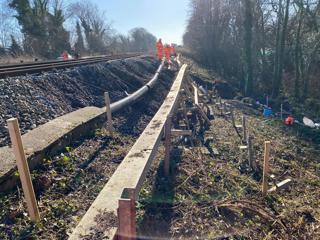
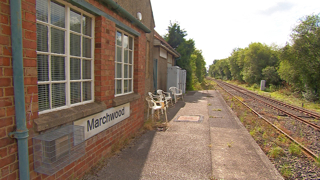
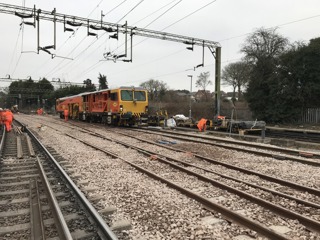
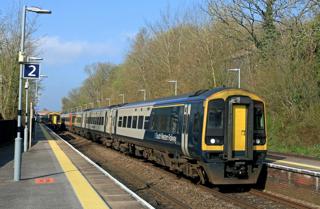
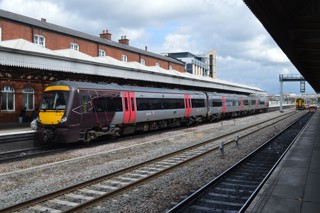











Login to comment
Comments
No comments have been made yet.